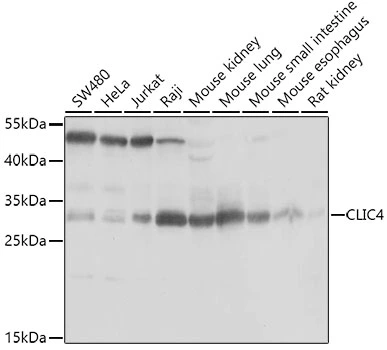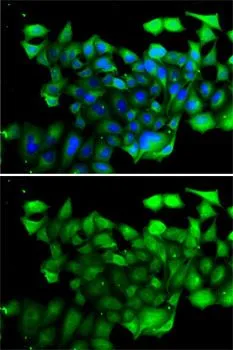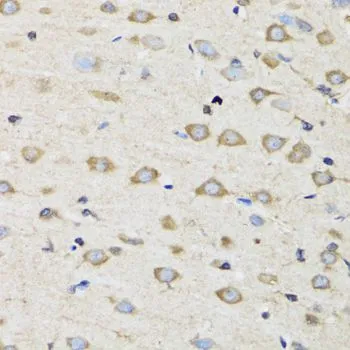
WB analysis of various sample lysates using GTX33100 CLIC4 antibody. Dilution : 1:1000 Loading : 25microg per lane
CLIC4 antibody
GTX33100
ApplicationsImmunoFluorescence, Western Blot, ImmunoCytoChemistry, ImmunoHistoChemistry, ImmunoHistoChemistry Paraffin
Product group Antibodies
ReactivityHuman, Mouse, Rat
TargetCLIC4
Overview
- SupplierGeneTex
- Product NameCLIC4 antibody
- Delivery Days Customer9
- Application Supplier NoteWB: 1:500 - 1:2000. ICC/IF: 1:50 - 1:100. IHC-P: 1:50 - 1:200. *Optimal dilutions/concentrations should be determined by the researcher.Not tested in other applications.
- ApplicationsImmunoFluorescence, Western Blot, ImmunoCytoChemistry, ImmunoHistoChemistry, ImmunoHistoChemistry Paraffin
- CertificationResearch Use Only
- ClonalityPolyclonal
- ConjugateUnconjugated
- Gene ID25932
- Target nameCLIC4
- Target descriptionchloride intracellular channel 4
- Target synonymschloride intracellular channel 4 like; chloride intracellular channel protein 4; CLIC4L; epididymis secretory sperm binding protein; H1; huH1; intracellular chloride ion channel protein p64H1; MTCLIC; p64H1
- HostRabbit
- IsotypeIgG
- Protein IDQ9Y696
- Protein NameChloride intracellular channel protein 4
- Scientific DescriptionChloride channels are a diverse group of proteins that regulate fundamental cellular processes including stabilization of cell membrane potential, transepithelial transport, maintenance of intracellular pH, and regulation of cell volume. Chloride intracellular channel 4 (CLIC4) protein, encoded by the CLIC4 gene, is a member of the p64 family; the gene is expressed in many tissues and exhibits a intracellular vesicular pattern in Panc-1 cells (pancreatic cancer cells). [provided by RefSeq, Jul 2008]
- ReactivityHuman, Mouse, Rat
- Storage Instruction-20°C or -80°C,2°C to 8°C
- UNSPSC12352203


